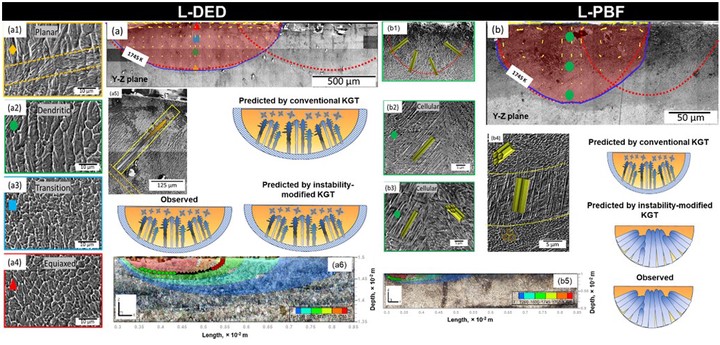Columnar-to-equiaxed transition in laser fusion additive manufacturing

Abstract
Understanding columnar-to-equiaxed transition (CET) is a critical aspect of microstructural evolution in additively manufactured (AM) alloys, since proportions of columnar and equiaxed morphologies impact strength- ductility synergy. Traditional methodologies for CET prediction, primarily based on power-law relation between growth-rate and laser travel speed independent constitutional undercooling, have limitations in capturing transition domains at higher growth-rate, characteristic to AM. The existing Kurz-Giovanola-Trivedi (KGT) framework was leveraged as the basis for a modified CET model to predict microstructures more accurately for laser-directed energy deposition and powder-bed fusion for the whole laser-velocity domain. Two major alterations were implemented to modify the KGT model: first, undercooling was redefined by incorporating growth- rate and multi-component dependent thermo-kinetic parameters to radial, kinetic, thermal, and constitutional undercooling and second, marginal growth-rate instability domains were introduced. Compared to conventional KGT plot, the proposed model can provide better prediction for any AMed material, thus paving the way for designing location-specific microstructures